Missions Matter for Measuring Impact
Many organizations struggle to measure their impact. Often this difficulty arises because they have not developed (and implemented) a mission statement. A mission statement is so much more than a declaration of an organization’s purpose. Internally, a mission statement serves as a blueprint, guiding the organization’s activities and, ultimately, provides a basis for measuring the organization’s impact. In this post, I demonstrate how to go from mission to measurement of impact in three key steps.
STEP 1: Determine what your organization aims to achieve; that is, develop a mission statement. Answer the following questions while developing your organization’s mission statement:
Why does your organization exist? For organizations with a social purpose, the question to answer here would be: what change does your organization hope to bring about?
What target population does your organization serve?
What activities does your organization undertake?
Where will these activities take place?
STEP 2: Establish indicators of success. After developing your mission statement, consider what indicators would best demonstrate ‘success’ or that your organization has been successful in meeting its mission. While some believe it is possible to develop and measure a single best indicator of success, I believe that it is important to develop several carefully crafted measures of success that can help you determine whether or not your organization is fulfilling its mission. To accomplish this step, you may consider reviewing the literature in your field or researching what other organizations with a similar purpose have done. It is also important to consider what ‘success’ for your organization looks like in the short vs. long-term.
STEP 3: Gather evidence (over time). After developing a set of indicators to measure success, it is essential to track those indicators over time from baseline to some future point. During this step, you should consider what data collection methods should be used to measure the indicators you have established. Is it enough to gather quantitative metrics, or are qualitative measures needed to assess change and determine impact? Do you need to identify a population (or setting) similar to your target population that did not access your services to serve as a comparison group? Keep in mind that the evidence you collect will help you make the case that your organization, and, more specifically, its activities, has contributed to an impact.
Let’s see how this could work with an example:
Organization Z is a nonprofit that serves the Neighborhood Y community. The organization promotes reading literacy by providing children access to books.
STEP 1: DEVELOP A MISSION STATEMENT
STEP 2: ESTABLISH INDICATORS OF SUCCESS
A preliminary review of the reading literacy literature identified two key indicators of success that are relevant to measuring Organization Z’s impact:
STEP 3: GATHER EVIDENCE
Measuring Indicators of Success. How might you measure interest in reading or reading proficiency? For the first indicator, you might ask children “How interested are you in reading books?” at baseline and 6 months after accessing your organization’s books. Or, for the second indicator, you might decide to use an existing scale or instrument that has been developed and tested to assess reading proficiency (e.g., the Peabody Individual Achievement Tests for reading comprehension and recognition) at baseline, 6 months after accessing books, and 1 year after accessing books. A third option might be to develop a parent/guardian questionnaire that will ask the parents or guardians of children who access books from your organization to observe and document their child’s reading behaviors over some specified time period. However you decide to measure your indicators of success, continuity is key. Defining and measuring indicators in a consistent way allows for comparison across time and will ultimately help you streamline the process of measuring your organization’s impact.
Other Considerations. The organization’s mission in this example is to promote reading literacy in a particular neighborhood (i.e., Neighborhood Y). Given this information, it may be advantageous to collect comparison data from the city in which the neighborhood is located or a nearby neighborhood with similar demographics to better understand the impact of the organization’s efforts. For example, you might collect data from the school district where the neighborhood is located to determine whether children who access your organization’s books show greater growth in reading proficiency compared to the neighborhood average over some period of time. This approach helps you rule out alternative explanations for the observed impact.
While trying to measure impact can be challenging, it is not impossible. Organizations that invest time and effort in developing a well-crafted mission statement are more successful in measuring impact.
Want to learn more about program evaluation? Check out some of my other Methodology-related posts.
**Special thanks to Daphne Neal for editing this post**



